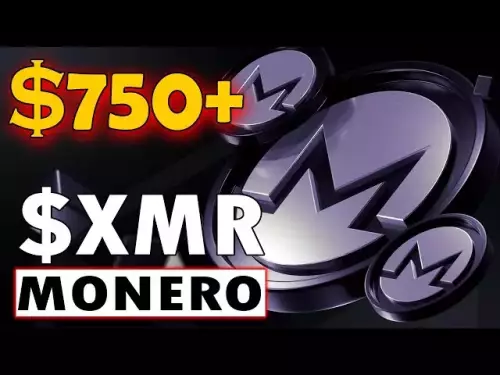-
 bitcoin
bitcoin $107208.295278 USD
-1.54% -
 ethereum
ethereum $3874.629914 USD
-1.38% -
 tether
tether $1.000440 USD
0.03% -
 bnb
bnb $1089.465513 USD
-5.53% -
 xrp
xrp $2.327672 USD
-1.65% -
 solana
solana $184.766505 USD
-0.73% -
 usd-coin
usd-coin $1.000076 USD
0.02% -
 tron
tron $0.310632 USD
-1.99% -
 dogecoin
dogecoin $0.187615 USD
-1.60% -
 cardano
cardano $0.633389 USD
-2.75% -
 ethena-usde
ethena-usde $0.999553 USD
0.03% -
 hyperliquid
hyperliquid $35.608231 USD
-4.13% -
 chainlink
chainlink $16.876114 USD
-3.98% -
 stellar
stellar $0.312239 USD
-0.91% -
 bitcoin-cash
bitcoin-cash $473.262969 USD
-7.09%
How to avoid slippage in CRO trading? What are the execution strategies?
To minimize slippage in CRO trading, use limit orders, trade during high liquidity periods, and employ execution strategies like TWAP and VWAP.
Apr 30, 2025 at 02:56 am

Trading cryptocurrencies, such as CRO (Crypto.com Coin), can be an exciting yet challenging endeavor. One of the key issues traders face is slippage, which occurs when there is a difference between the expected price of a trade and the price at which the trade is actually executed. This article will explore various strategies to minimize slippage and detail execution methods that can help you trade CRO more effectively.
Understanding Slippage in CRO Trading
Slippage in cryptocurrency trading, including CRO, can happen due to market volatility, low liquidity, and delays in order execution. Slippage is particularly prevalent in fast-moving markets where prices can change rapidly. For instance, if you place a market order to buy CRO at a certain price, but the order is executed at a higher price due to rapid price movements, you experience negative slippage.
To understand and manage slippage, it's crucial to grasp the underlying factors:
- Market Volatility: High volatility increases the likelihood of slippage because prices can change quickly.
- Liquidity: Lower liquidity means larger orders can significantly impact the market price, leading to slippage.
- Order Type: Different order types (market, limit, etc.) have varying degrees of susceptibility to slippage.
Strategies to Minimize Slippage
There are several strategies traders can employ to minimize slippage when trading CRO. Let's explore some of these in detail:
Using Limit Orders
Limit orders allow you to specify the maximum price you are willing to pay when buying CRO or the minimum price you are willing to accept when selling. By using limit orders, you can avoid the slippage that often accompanies market orders.
- Place a limit order to buy CRO at a specific price. If the market reaches that price, your order will be executed, otherwise, it will remain pending.
- Similarly, use a limit order to sell CRO at your desired price, ensuring you don't sell at a lower price than expected.
Trading During High Liquidity Periods
Trading CRO during periods of high liquidity can reduce slippage. High liquidity means there are more buyers and sellers in the market, which can lead to tighter bid-ask spreads and less price impact from individual trades.
- Monitor trading volumes and choose to trade during peak times, typically when major markets are open.
- Use trading platforms that provide real-time liquidity data to make informed decisions.
Slippage Tolerance Settings
Some trading platforms offer slippage tolerance settings, allowing you to specify the maximum amount of slippage you are willing to accept. This feature can be particularly useful for large trades or in highly volatile markets.
- Set a slippage tolerance in your trading platform. For example, you might set a tolerance of 0.5%, meaning your order will only execute if the slippage is within this limit.
- Adjust the slippage tolerance based on current market conditions and your risk tolerance.
Execution Strategies for CRO Trading
Effective execution strategies can help you trade CRO more efficiently and minimize the impact of slippage. Here are some key execution strategies:
Time-Weighted Average Price (TWAP)
TWAP is a strategy that involves executing orders at regular intervals over a specified period to achieve an average execution price. This strategy can help reduce the market impact of large orders.
- Determine the total volume of CRO you want to trade and the time frame over which you want to execute the trade.
- Divide the total volume into smaller portions and execute these at regular intervals within the specified time frame.
Volume-Weighted Average Price (VWAP)
VWAP is similar to TWAP but takes into account the volume of trades at each price level. This can be particularly useful in markets with varying liquidity throughout the day.
- Calculate the VWAP for CRO using historical trade data.
- Execute your orders in a way that aligns with the VWAP, aiming to achieve a better average price.
Iceberg Orders
Iceberg orders allow you to place large orders that are only partially visible to the market. This can help minimize the market impact and reduce slippage.
- Place an iceberg order for CRO, specifying the total volume and the visible portion of the order.
- The visible portion will be executed as it is filled, and additional portions will be revealed as needed until the entire order is completed.
Monitoring and Adjusting Your Strategy
Effective trading of CRO requires ongoing monitoring and adjustment of your strategies. Market conditions can change rapidly, and what works one day may not work the next.
- Regularly review your trading performance and the effectiveness of your strategies in minimizing slippage.
- Stay informed about market news and events that could impact CRO's price and liquidity.
- Be prepared to adjust your slippage tolerance, order types, and execution strategies based on current market conditions.
Utilizing Advanced Trading Tools
Many trading platforms offer advanced tools that can help you manage slippage and execute trades more effectively. Advanced trading tools can provide real-time data, automated trading options, and more.
- Use real-time market data to make informed decisions about when to place your orders.
- Consider using algorithmic trading tools that can automatically execute orders based on predefined criteria, helping to minimize slippage.
- Explore trading bots that can monitor the market and execute trades on your behalf, potentially reducing the impact of slippage.
FAQs
Q: Can slippage be completely eliminated in CRO trading?A: While it's impossible to completely eliminate slippage due to the inherent nature of cryptocurrency markets, using the strategies outlined in this article can significantly reduce its impact.
Q: How does the choice of trading platform affect slippage in CRO trading?A: The choice of trading platform can greatly affect slippage. Platforms with higher liquidity and more advanced trading features tend to offer better execution and lower slippage. It's important to choose a reputable platform that suits your trading needs.
Q: What is the difference between positive and negative slippage in CRO trading?A: Positive slippage occurs when your trade is executed at a better price than expected, while negative slippage happens when your trade is executed at a worse price. Positive slippage can be beneficial, but it's less predictable and harder to control than minimizing negative slippage.
Q: How can I test my slippage minimization strategies without risking real money?A: Many trading platforms offer demo accounts or paper trading options that allow you to practice trading and test strategies without using real funds. This can be a valuable way to refine your approach to minimizing slippage before applying it to live trading.
Disclaimer:info@kdj.com
The information provided is not trading advice. kdj.com does not assume any responsibility for any investments made based on the information provided in this article. Cryptocurrencies are highly volatile and it is highly recommended that you invest with caution after thorough research!
If you believe that the content used on this website infringes your copyright, please contact us immediately (info@kdj.com) and we will delete it promptly.
- Crypto, DeFi, and Regulation: Navigating the Wild West in Style
- 2025-10-18 23:05:14
- BlockDAG: The Breakthrough Challenging Litecoin's Legacy
- 2025-10-18 23:05:14
- BNB Price Rally: Will Binance Coin Hit $2,000?
- 2025-10-18 22:45:14
- Pi Network: Testnet Triumphs and Community Innovation Surging!
- 2025-10-18 22:45:14
- Ethereum Price: Bullish Signals Emerge Amidst BitMine ETH Accumulation
- 2025-10-18 23:10:16
- Pi Network, DEX, and Crypto Trading: A New Era of Transparent Finance
- 2025-10-18 22:50:13
Related knowledge

Practical parameter settings for a Bitcoin multi-timeframe moving average system
Sep 18,2025 at 10:54pm
Optimizing Timeframe Combinations for Bitcoin Trading1. Selecting appropriate timeframes is crucial when building a multi-timeframe moving average sys...

How can I filter out false breakouts in Dogecoin high-frequency trading?
Sep 22,2025 at 01:00am
Understanding False Breakouts in Dogecoin Trading1. A false breakout occurs when Dogecoin's price appears to move beyond a defined support or resistan...

Techniques for identifying tops and bottoms in the Bitcoin on-chain NVT model
Sep 20,2025 at 07:54pm
Understanding the NVT Model in Bitcoin Analysis1. The Network Value to Transactions (NVT) ratio is often described as the 'P/E ratio' of the cryptocur...

What does the surge in open interest in Bitcoincoin futures mean?
Sep 20,2025 at 11:18pm
Understanding the Surge in Dogecoin Futures Open Interest1. A surge in open interest within Dogecoin futures indicates a growing number of active cont...

How can I use the Ethereum USDT premium to gauge market sentiment?
Sep 18,2025 at 11:55pm
Understanding the Ethereum USDT Premium1. The Ethereum USDT premium refers to the price difference between USDT (Tether) traded on Ethereum-based plat...

What should I do if Ethereum staking yields decline?
Sep 20,2025 at 06:18am
Understanding the Causes Behind Declining Ethereum Staking Yields1. The Ethereum network transitioned to a proof-of-stake consensus mechanism with the...

Practical parameter settings for a Bitcoin multi-timeframe moving average system
Sep 18,2025 at 10:54pm
Optimizing Timeframe Combinations for Bitcoin Trading1. Selecting appropriate timeframes is crucial when building a multi-timeframe moving average sys...

How can I filter out false breakouts in Dogecoin high-frequency trading?
Sep 22,2025 at 01:00am
Understanding False Breakouts in Dogecoin Trading1. A false breakout occurs when Dogecoin's price appears to move beyond a defined support or resistan...

Techniques for identifying tops and bottoms in the Bitcoin on-chain NVT model
Sep 20,2025 at 07:54pm
Understanding the NVT Model in Bitcoin Analysis1. The Network Value to Transactions (NVT) ratio is often described as the 'P/E ratio' of the cryptocur...

What does the surge in open interest in Bitcoincoin futures mean?
Sep 20,2025 at 11:18pm
Understanding the Surge in Dogecoin Futures Open Interest1. A surge in open interest within Dogecoin futures indicates a growing number of active cont...

How can I use the Ethereum USDT premium to gauge market sentiment?
Sep 18,2025 at 11:55pm
Understanding the Ethereum USDT Premium1. The Ethereum USDT premium refers to the price difference between USDT (Tether) traded on Ethereum-based plat...

What should I do if Ethereum staking yields decline?
Sep 20,2025 at 06:18am
Understanding the Causes Behind Declining Ethereum Staking Yields1. The Ethereum network transitioned to a proof-of-stake consensus mechanism with the...
See all articles










































































